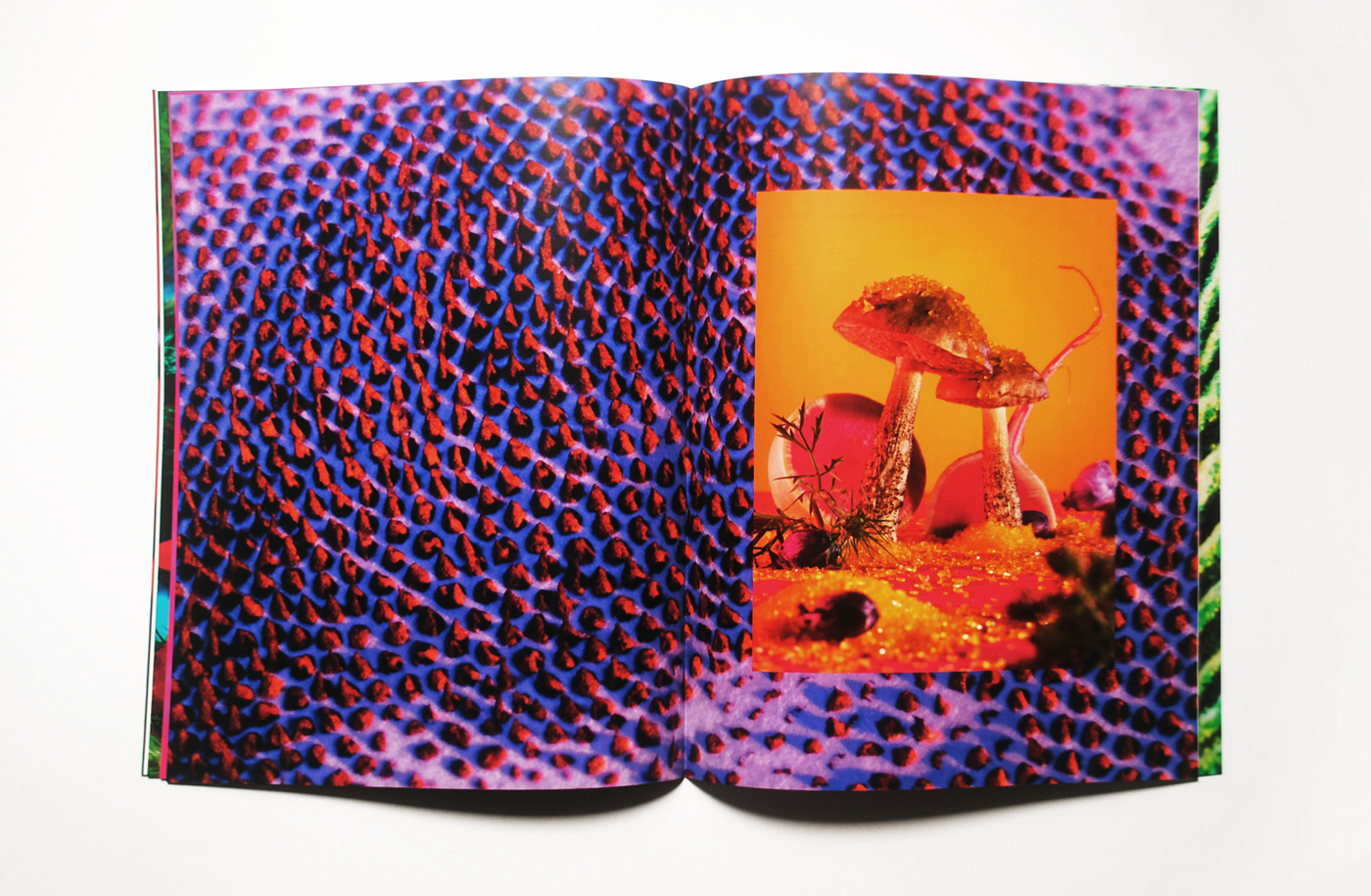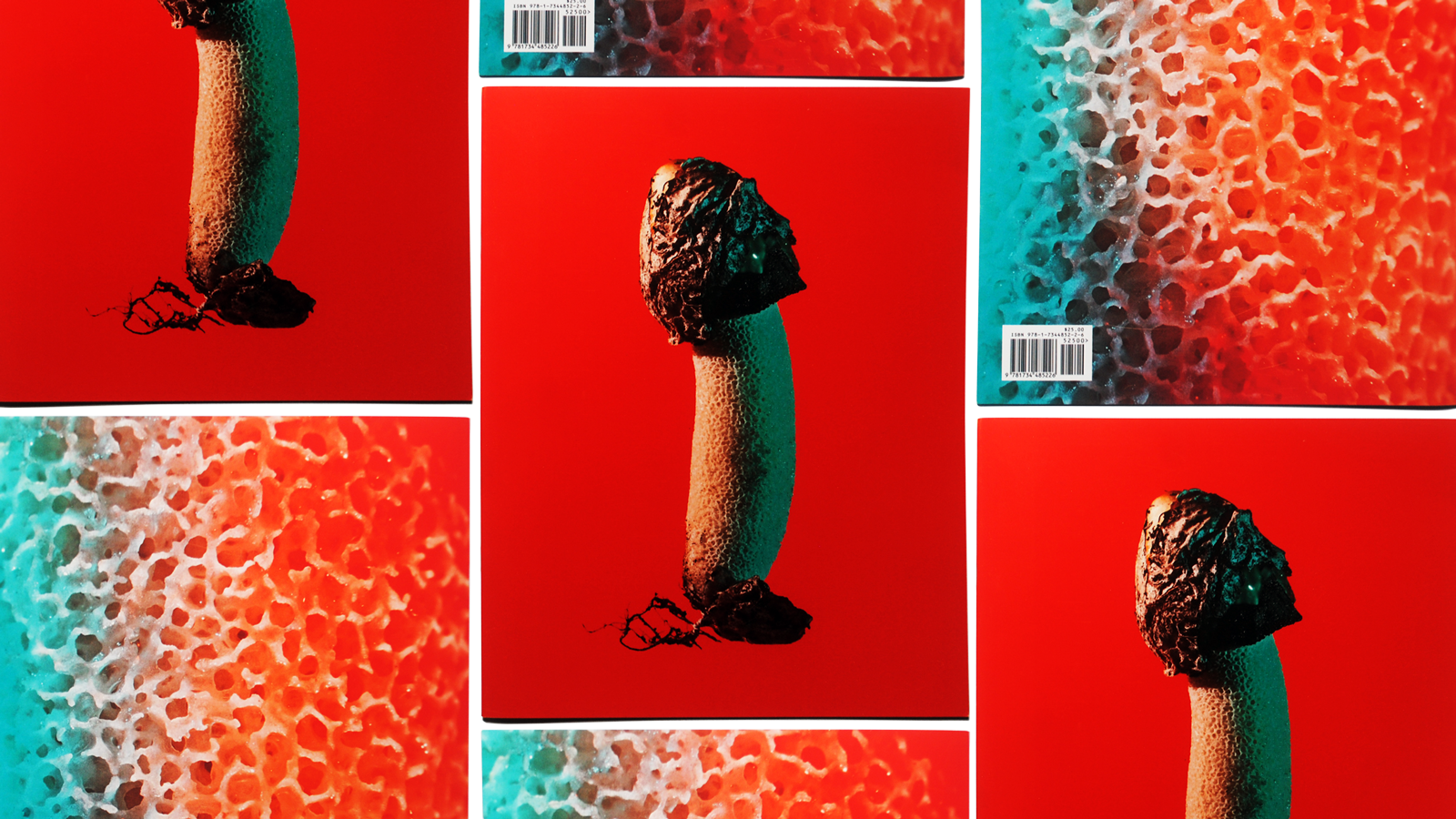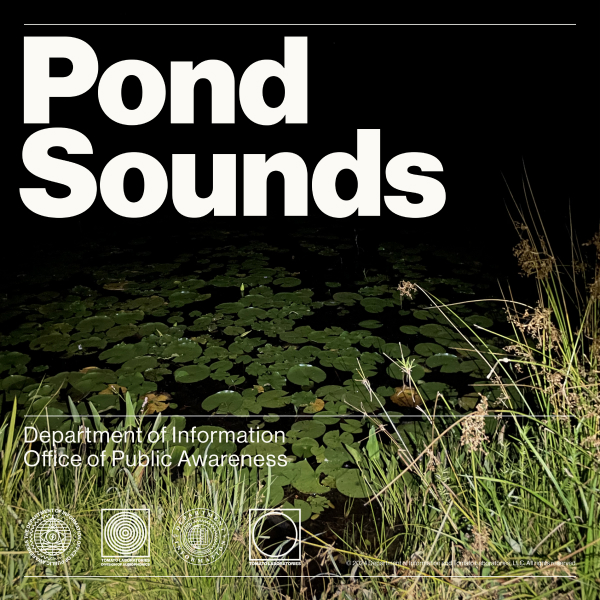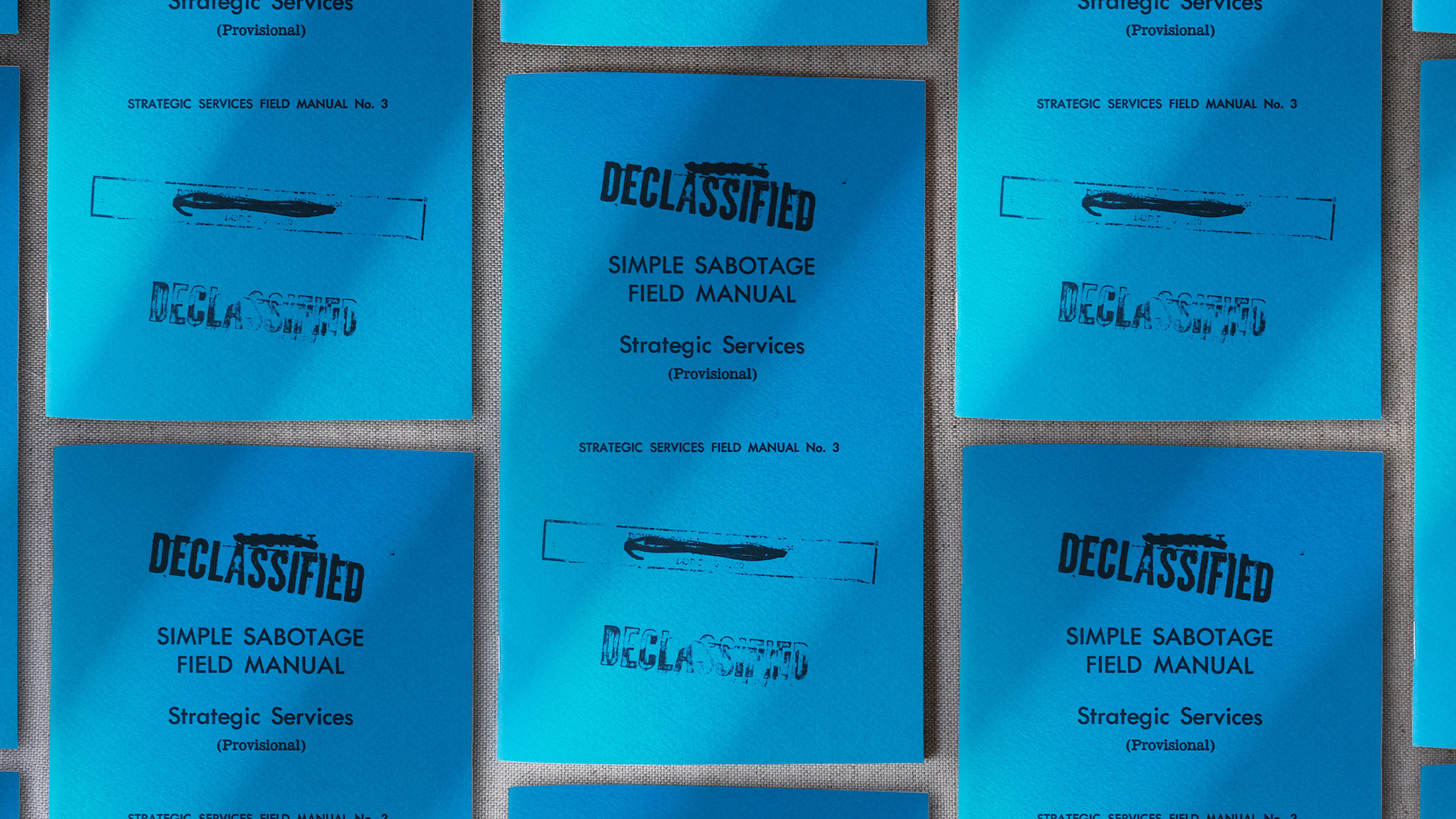Mushrooms & Friends 3 is an 8.5” x 11” staple-bound high-fidelity celebration of wild mushrooms, their friends, imagination, and the color spectrum.
It is not necessary to know that Cantharellus cinnabarinus–commonly known as a chanterelle–is edible, or that it’s Greek name refers to it’s cup-like shape, to appreciate that the mushroom looks really cool and transfixing floating in a void of turqoise-blue nothingness. We think that kind of deliberate detachment from the barriers of a potentially endless and intimidating hole of scientific knowledge about fungi is what makes this third installment of Phyllis Ma’s otherworldly photo journey of mushrooms successful and accessible.

There are no dense columns of scientific explanations or footnotes accompanying any of the photos. Instead, you are permitted and forced to leaf through the field-of-vision-encompassing explosion of color without worrying about learning anything you’ll forget later.
Thankfully, you will still be constantly wondering “what the hell am I looking at?” For those questions, there is an index in the back. Importantly noted, however, is a disclaimer that “this is not intended as a mushroom identification guide.”

If you need to know what the spores of a Leccinum scabrum, an edible mushroom belonging to the family Boletaceae, look like from the perspective of a hovering insect whose world is soaked in a purple and indigo flood of the visible spectrum, I recommend purchasing this book and looking through it for answers.

These mushrooms were foraged in and around New York City parks and forests during the global pandemic. The author makes a careful and mindful decision to point out the ancestral inhabitants of the region, the Lenape peoples, would have been experiencing these same mushrooms for thousands of years as we are now, noting “often, public parks and nature reserves in the United States were established through the removal of Indigenous peoples. In recognizing these erased histories, we can begin to work towards more equitable access to nature for everyone.”
We’ve added below the author’s suggested organizations and resources on how to support or donate to the Lenape community.
Often, public parks and nature reserves in the United States were established through the removal of Indigenous peoples. In recognizing these erased histories, we can begin to work towards more equitable access to nature for everyone.
We’ve only posted a couple of our favorite spreads here so we highly recommend purchasing the zine, or an earlier one from the series, while it is still in print to experience the full visual stimulation of the work.
Check out Mushroom & Friends 3 by Phyllis Ma.





